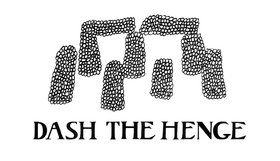
David Bowie
Waiting in the Sky (Before the Starman Came to Earth)
Buy in-store from 9am on Saturday 20th April
Buy online from 8pm on Monday 22nd April whilst stocks last
The tracklisting for Waiting In The Sky (Before The Starman Came To Earth) runs differently from the Ziggy Stardust album and features four songs that didn’t make the final album.
On Side 1, in the place of ‘Starman’, one of the last three tracks recorded for the album in February 1972, is ‘Round and Round’, a Chuck Berry cover. The track was finally released on a single as the B-side to ‘Drive-In Saturday’ on 6th April, 1973. Initially, closing Side 1 of the album was Bowie's version of Jacques Brel’s ‘Amsterdam’, which would later appear as the B-side of ‘Sorrow’ on 12th October, 1973.
Side 2 of the 15th December, 1971 tracklisting features two long-time non-LP fan favourites, ‘Holy Holy’ and ‘Velvet Goldmine’. The former is a re-recording with The Spiders of David’s 1971 single. Again, this version of the track had to wait several years before surfacing as the B-side of ‘Diamond Dogs’ on 14th June, 1974.
The cover of Waiting In The Sky (Before The Starman Came To Earth) features a photo of David taken at an early Ziggy Stardust period session by Brian Ward, and the two sides of the inner bags are the fronts of the two Trident Studios tape boxes. The album’s title comes from the lyrics of ‘Starman’, which, along with ‘Rock ’N’ Roll Suicide’ and ‘Suffragette City’, had not yet been recorded when this variation of the album was compiled.
Waiting In The Sky (Before The Starman Came To Earth) was cut on a customised late Neumann VMS80 lathe with fully recapped electronics from 192kHz restored masters of the original Trident Studios master tapes, with no additional processing on transfer. The half-speed vinyl cut was by engineer John Webber at AIR Studios, London.

